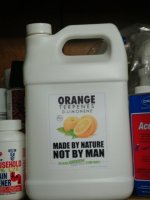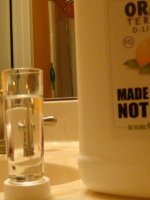Noob said:SWIM has done the acetate version of this with the vinegar with positive results each time, but now with the hcl method he is finding that it won't evaporate past a certain point and is left with a dark brownish red liquid similar in color to the acetate, but still quite watery and runny instead of "sticky"
Should he just wash with acetone anyway, and the mesc will just salt out and the acetone will pull some of that other stuff? Or is there a different approach he needs to take.
Turns out swim had 10% sulfuric/water solution rather than an hcl solution. Could he have just mixed the red liquid into water and then freeze precipitated the sulfate crystals out and poured off the liquid?
Should a different ratio of sulfuric acid:water be used?



